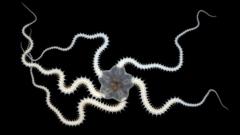Why Do Sharks Go Into Feeding Frenzies? A Case Study of a Recent, Unusual Attack on a Human Looks for Answers
NeutralScience
/https://tf-cmsv2-smithsonianmag-media.s3.amazonaws.com/filer_public/a1/e0/a1e0f2cc-ecc9-42f0-9055-ff3692dcabd5/gettyimages-1527347557.jpg)
A recent incident off the coast of Israel, where multiple dusky sharks attacked a swimmer, has prompted scientists to investigate the reasons behind such feeding frenzies. Understanding the triggers for these unusual attacks is crucial for preventing future incidents and ensuring the safety of beachgoers. This case study highlights the importance of research in marine behavior and its implications for human interactions with wildlife.
— via World Pulse Now AI Editorial System
/https://tf-cmsv2-smithsonianmag-media.s3.amazonaws.com/filer_public/62/01/62019da1-dd28-4322-aca0-0ec598b63235/7402439760_6437bcb924_k.jpg)

